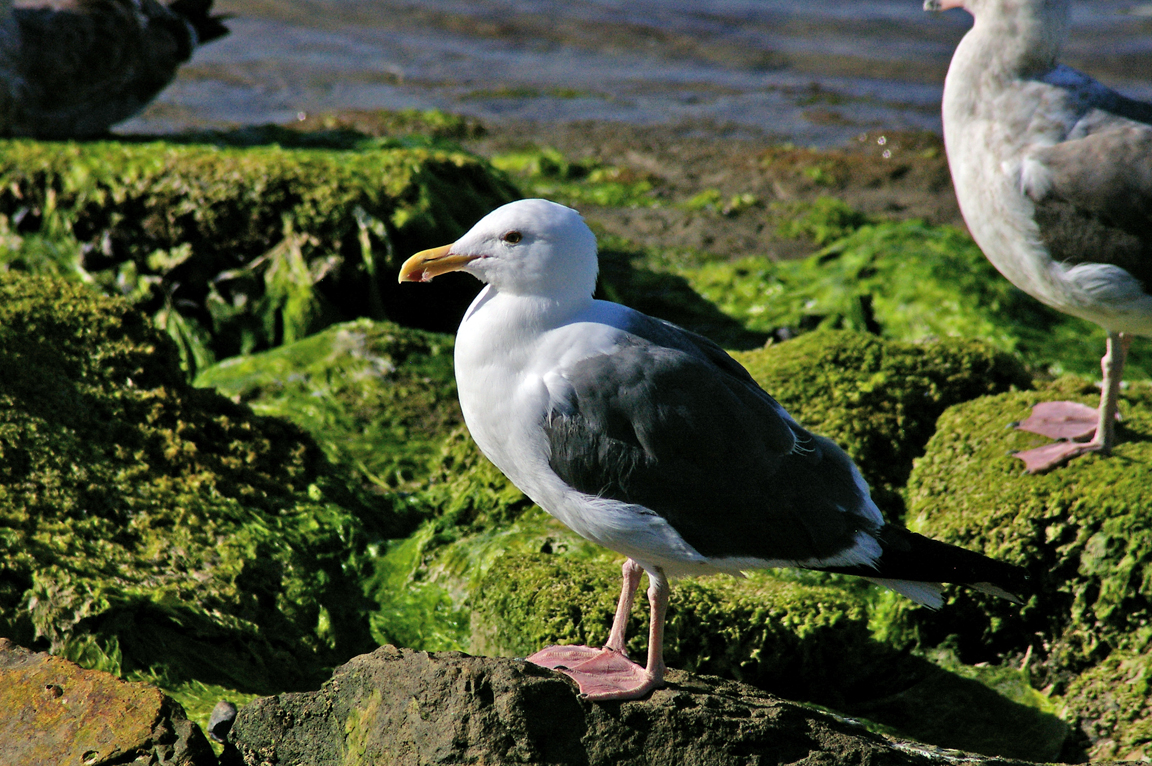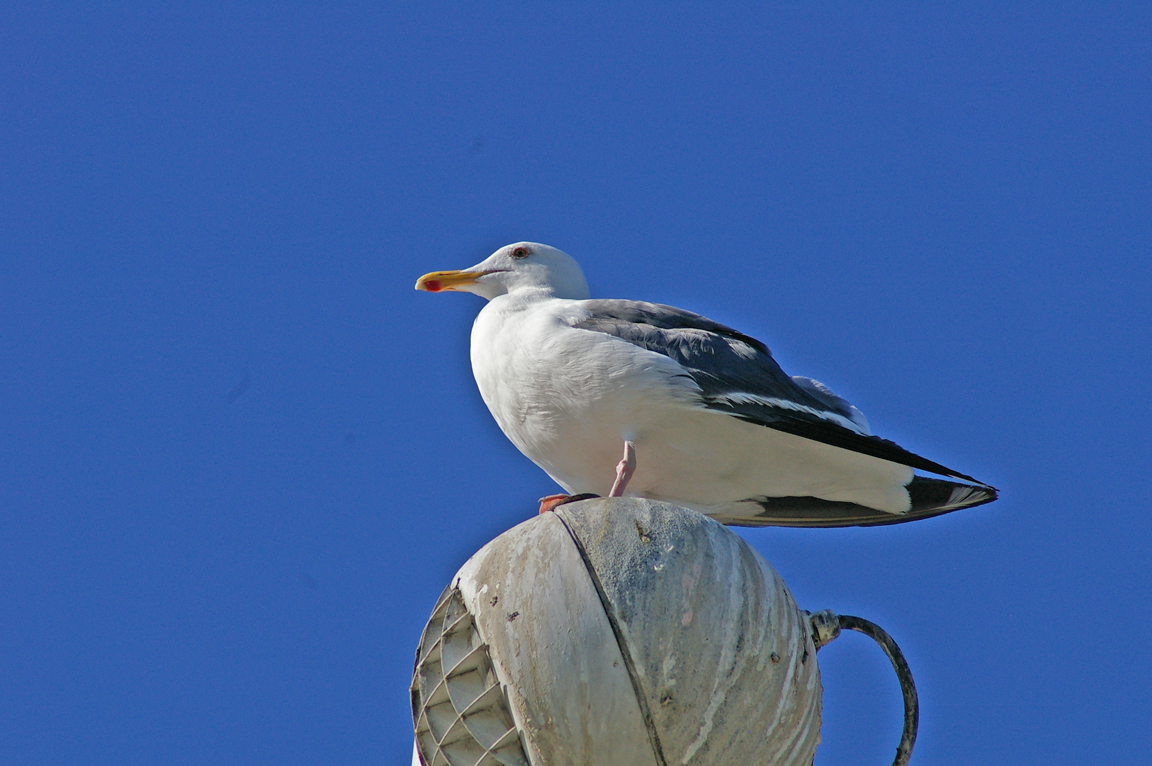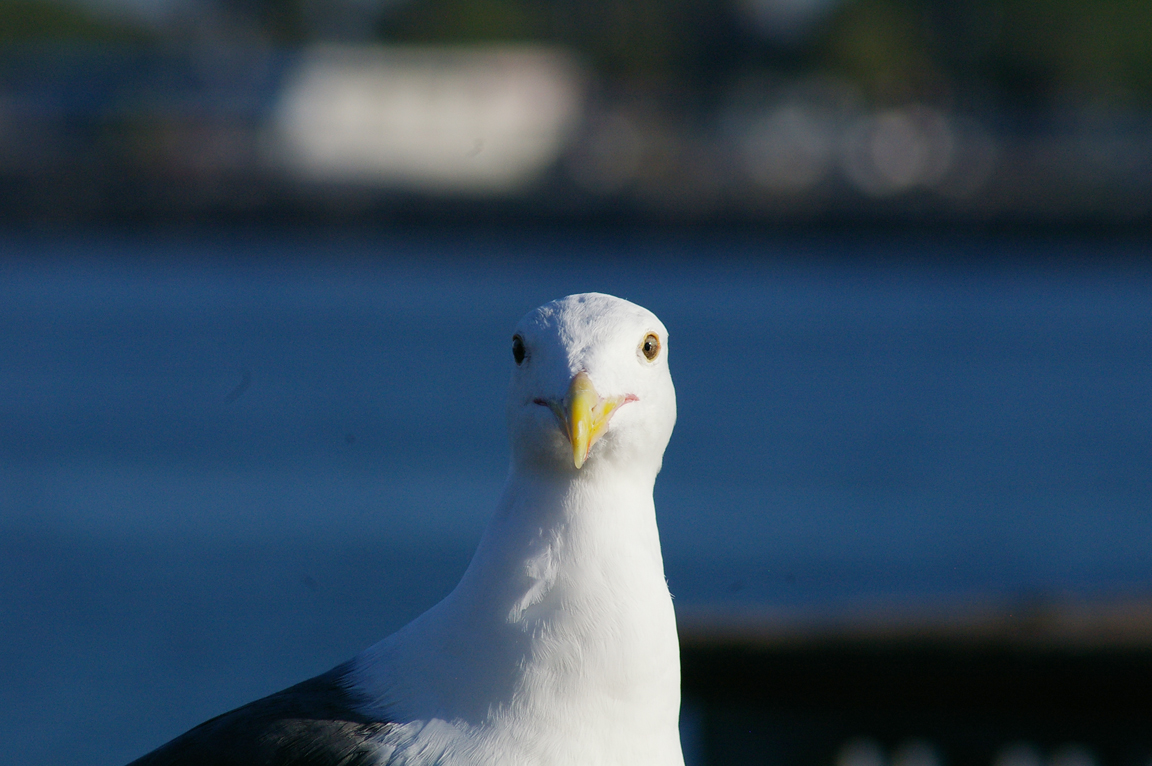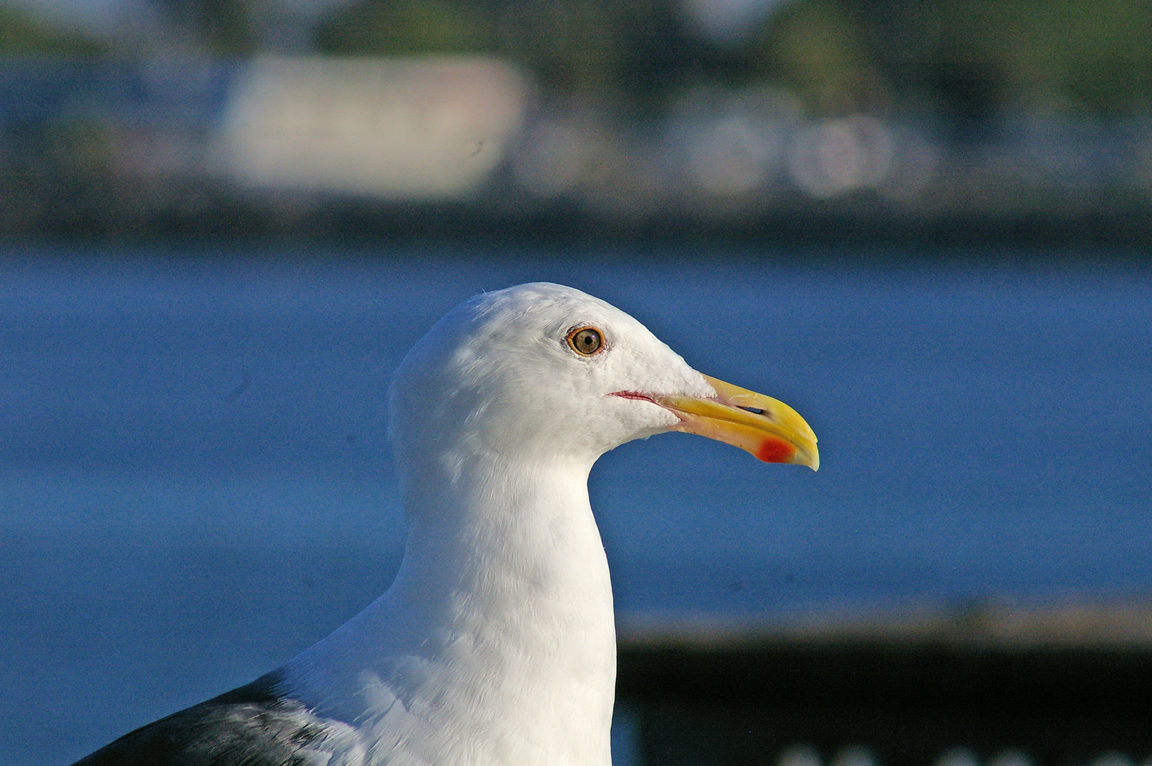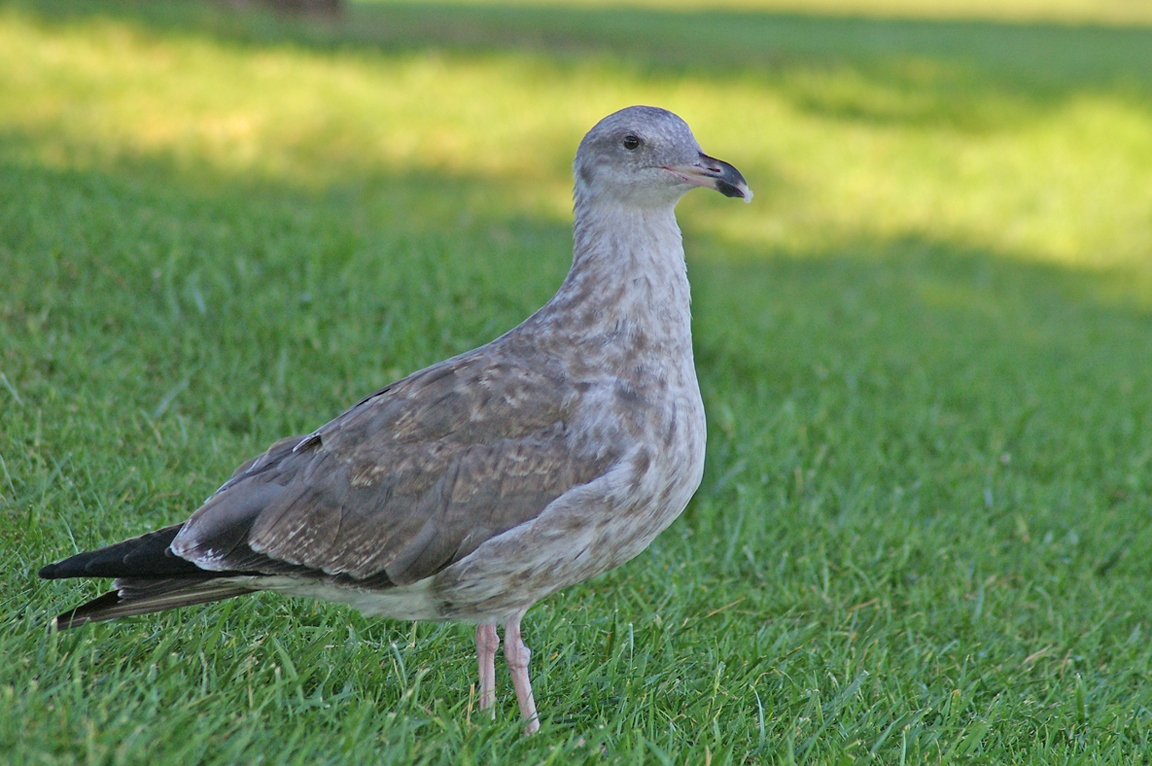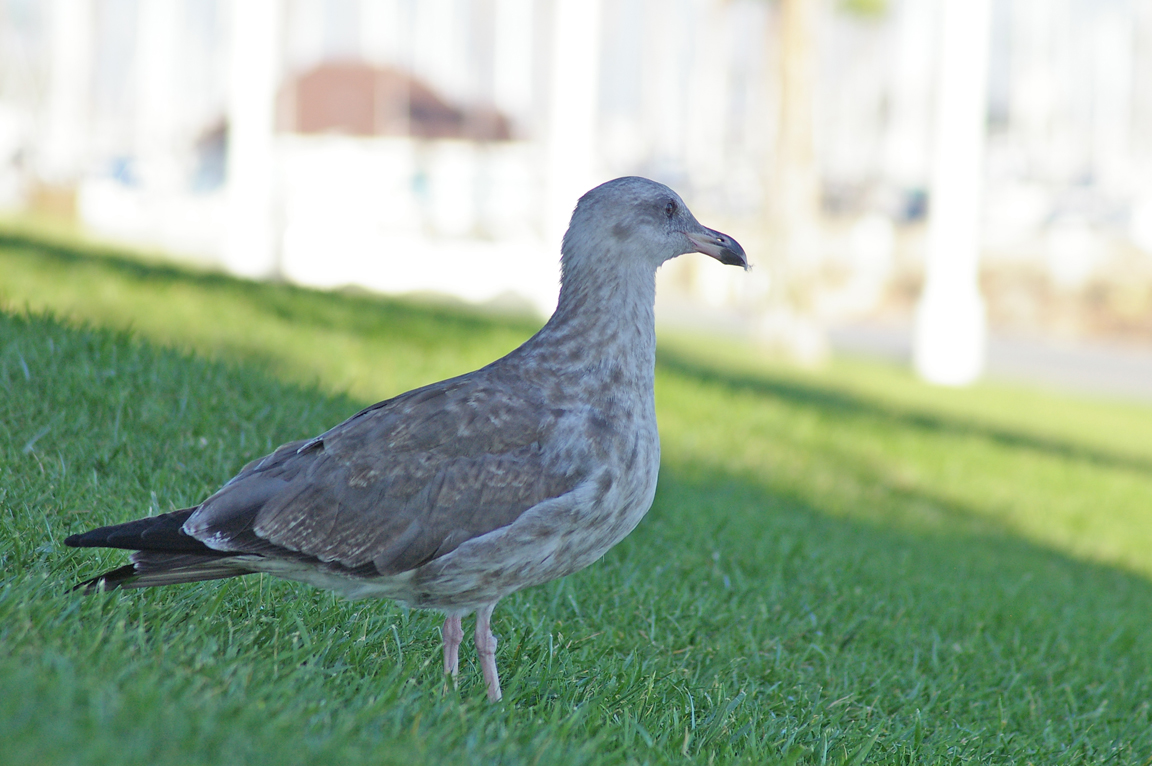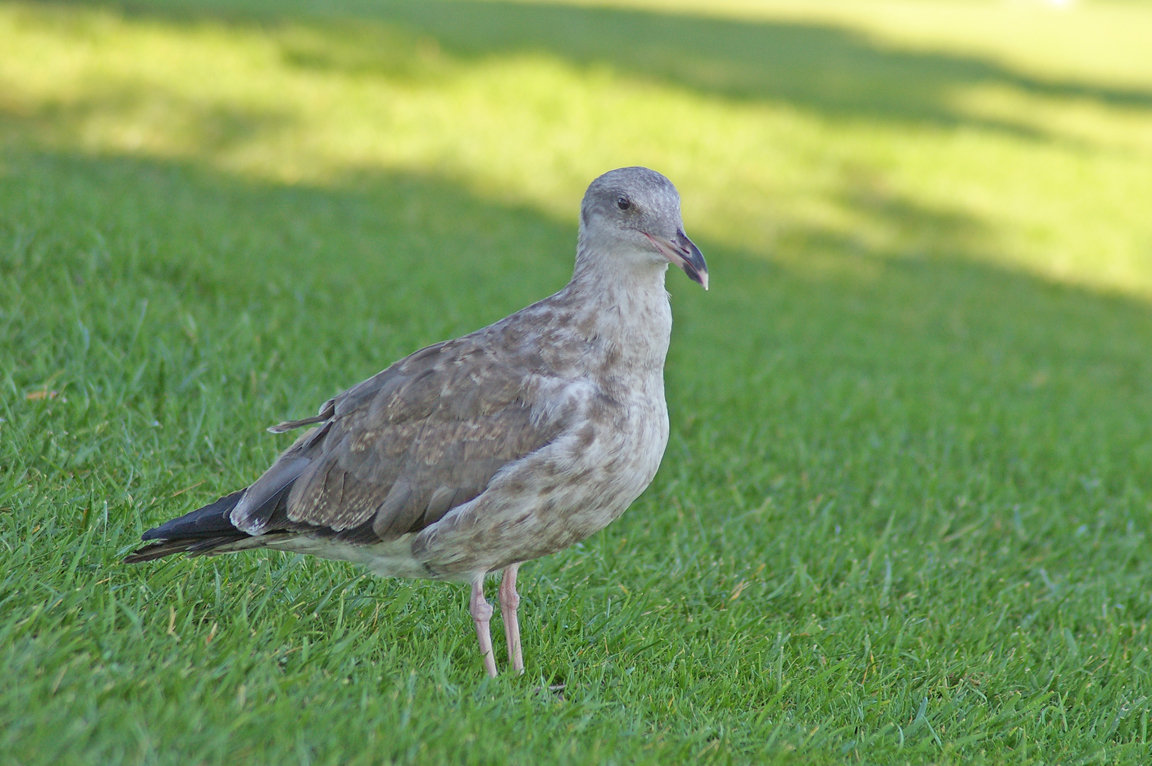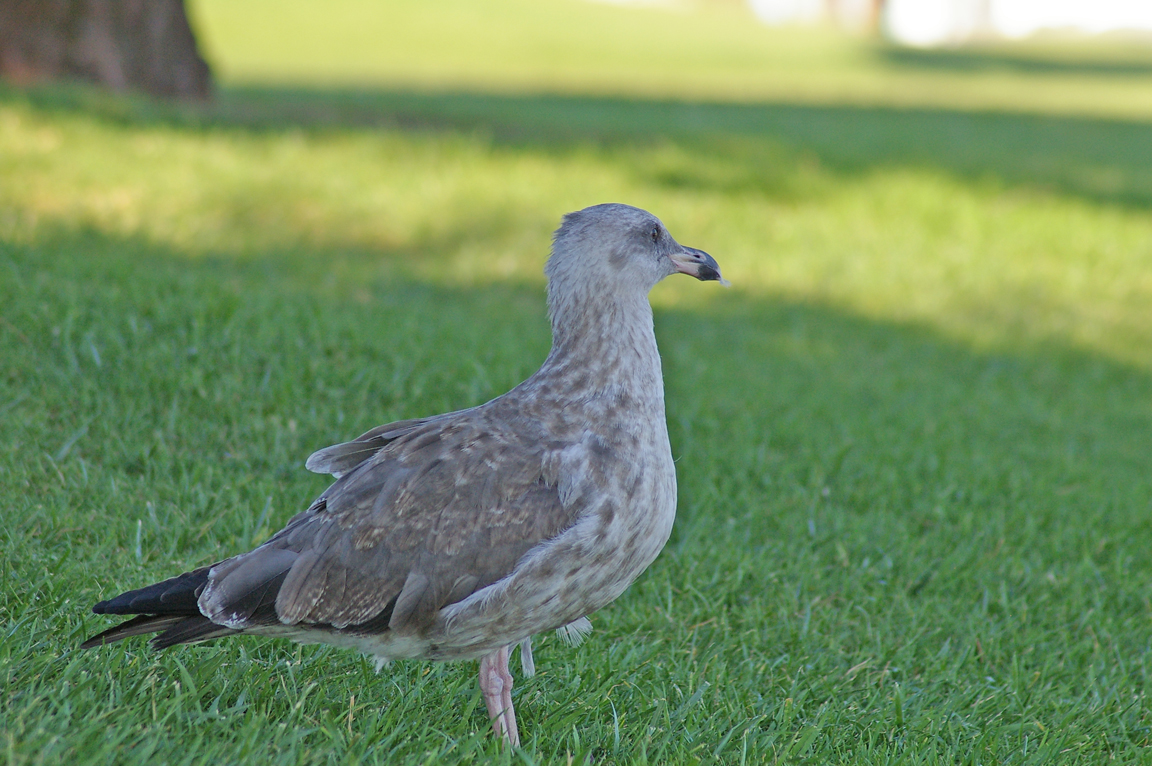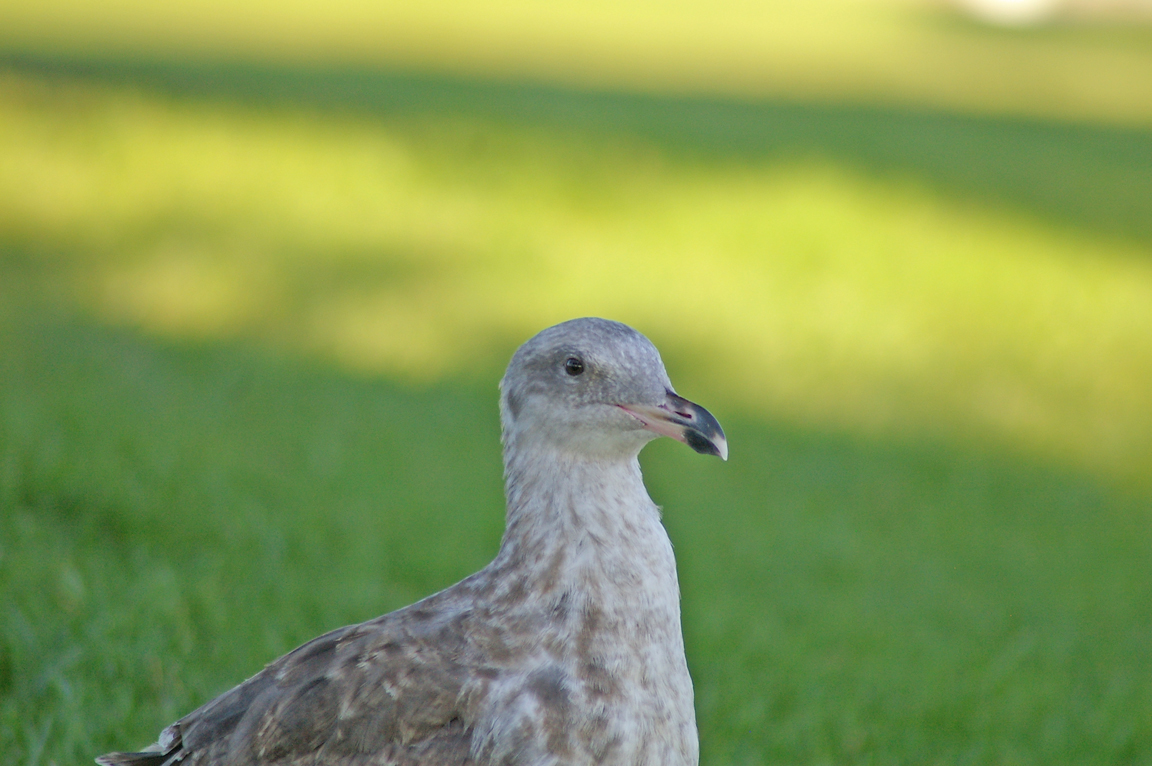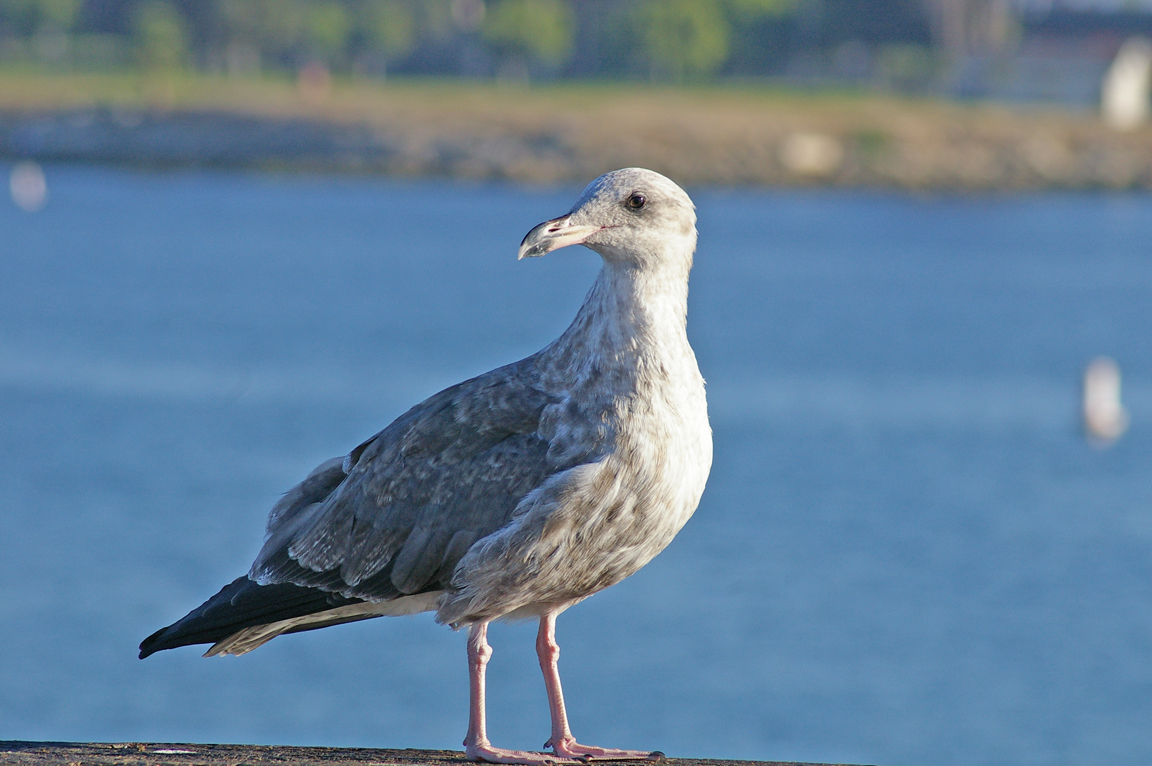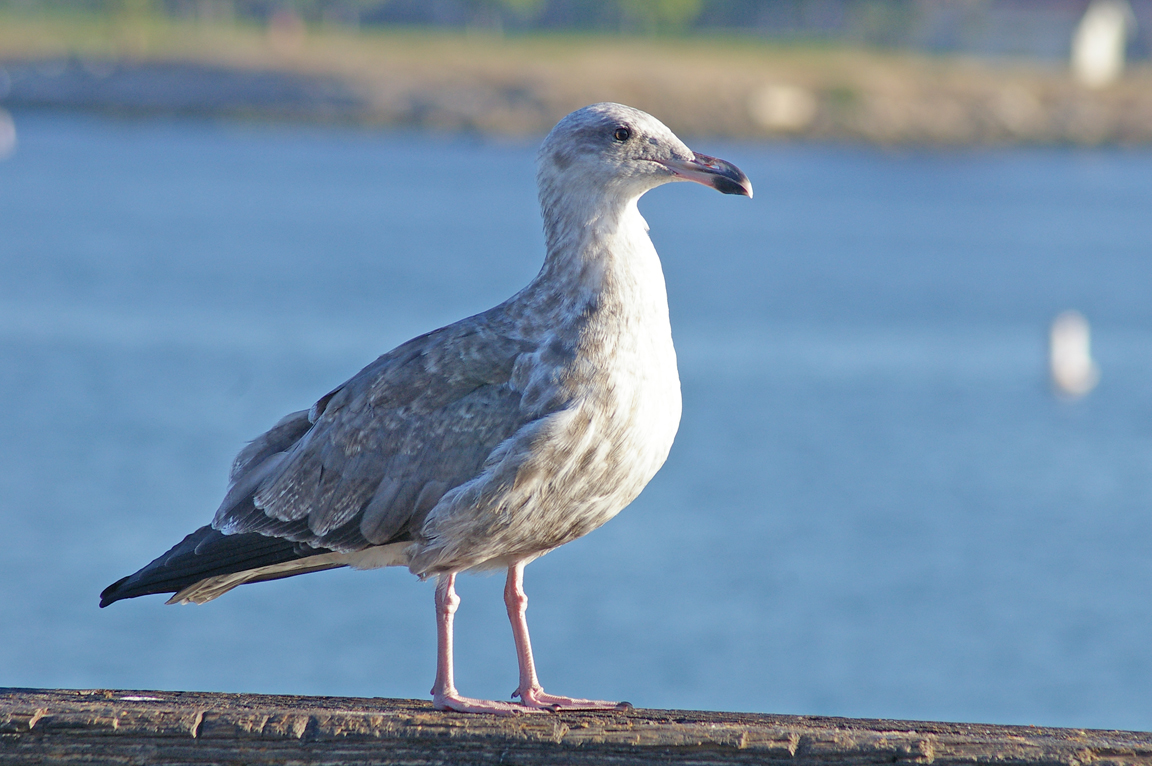|
|
|
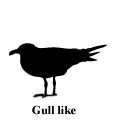 |
Western Gull
|
| Larus occidentalis | |
A large, dark-backed gull of the Pacific Coast, the Western Gull is seldom found far from the ocean.
Interesting Information
-
Like most gulls, the Western Gull is an opportunistic feeder, capturing its own live prey, scavenging refuse, or stealing food from seals and other gulls. It is known to steal milk from lactating female seals while they lie on their backs sleeping on the beach.
-
The Western Gull hybridizes extensively with the Glaucous-winged Gull, with the hybrids being the most common form in Washington. The hybrids can be similar to the parent adult forms, but usually have intermediate back and wingtip coloring. With the medium-gray back, dark upper surface to wingtips, frosty white undersurface to wingtips and a darkish eye, a hybrid may closely resemble a robust Thayer's Gull. The flatter and larger head of the hybrid, and especially the thick bill with a pronounced angle on the bottom, should help distinguish it from the smaller, slimmer Thayer's Gull.
-
The Yellow-footed Gull of the Gulf of California formerly was regarded as a race of the Western Gull. But its legs are a different color, and it also takes only three, not four, years to reach adult plumage.
-
In colonies with many more females than males present, two females may establish a pair bond. Each lays eggs, and then takes care of the double-sized brood. The female-biased sex ratio of some Western Gull colonies may have been the result of pollution by pesticides that acted like estrogen and made some male embryos develop as females.
Description
Adult Description
-
Size: 56-66 cm (22-26 in)
-
Wingspan: 120-144 cm (47-57 in)
-
Weight: 800-1250 g (28.24-44.13 ounces)
-
Large gull.
-
Head and underparts white.
-
Back dark slate gray.
-
Legs pink.
Breeding (Alternate) Plumage
Bill yellow with red spot near tip of lower mandible. Wing tips black, darker than back. Eyes yellowish white to golden brown. Thin ring of skin around eyes yellow or orange. Pronounced angle on lower edge of bill (gonys).
Nonbreeding (Basic) Plumage
Like breeding, but with a few dusky streaks on head and neck. Takes four years to reach adult plumage.
Sex Differences
Sexes alike in plumage, male larger than female.
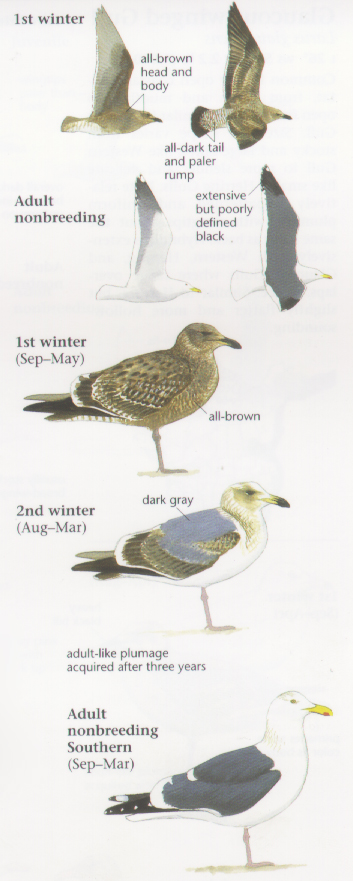
Photo taken from: The Sibley Field Guide by David Allen Sibley
Immature
Juvenal plumage: Dark clove-brown head and body. Back and wings dark, with light edgings to feathers. Tail dark brown. Flight feathers on wing blackish above, glossy gray below. Bill black. Legs dark gray with pink overtones. Eyes dark brown.
First Winter (Basic I): Like juvenal, but head, throat, and breast lighter and more streaked. Bill black with pale base. Eyes dark brown.
First Summer (Alternate I): Head, neck, and especially the throat whiter, but still streaked. Back showing dark gray feathers. Wing feathers worn and paler. Bill black with pale base. Eyes dark brown.
Second Winter (Basic II): Head whiter, but neck heavily streaked. Back mottled brown and dark gray. Underparts white, throat streaked. Wing tips black. Tail dark. Bill pale flesh at base, then black, with white tip. Eyes pale straw or brown.
Second Summer (Alternate II): Head and neck largely white with conspicuous streaking. Back may be entirely dark gray with a few brown feathers. Underparts mostly white, with some streaking in throat. Bill yellowish at base, then black with white tip. Eyes pale straw or brown.
Third Winter (Basic III): Some dirty brown on otherwise white neck and head. Back dark gray with only a few brown feathers. Underparts white. Tail largely white with some dark smudging. Outer wing feathers (primaries) black with white tips, with white subterminal spots on some. Inner wing feathers (secondaries) dark gray with broad white tips. Bill yellowish with blackish bar behind nostrils. Eyes yellow or buff.
Third Summer (Alternate III): Head and neck pure white or with only little streaking. Back all gray. Underparts white. Tail white with some dark smudging. Bill yellow with some red on lower mandible. Eyes brighter yellow.
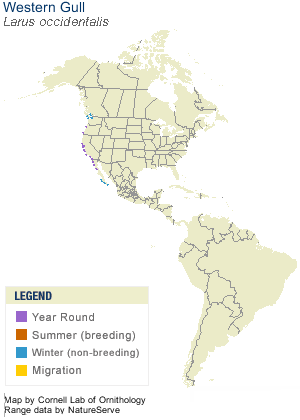
© 2003 Cornell Lab of Ornithology
|
Habitat |
|
|
Behavior |
|
Captures food near surface of water or on shore. Steals food from cormorants and other gulls. Swallows large prey whole. Common at garbage dumps. |
|
Food |
|
Marine invertebrates and fishes. Eggs and chicks of seabirds. Scavenges carrion and refuse. |
Taxonomy
| Kingdom: | Animalia |
| Phylum: | Chordata |
| Subphylum: | Vertebrata |
| Class: | Aves |
| Order: | Charadriiformes |
| Family: | Laridae |
| Subfamily: | Larinae |
| Genus: | Larus |
| Species: | Larus occidentalis |
| Subspecies: | Larus occidentalis livens |
| Larus occidentalis occidentalis | |
| Larus occidentalis wymani |
Similar Species |
|
|
Bird Sound |
|
Call a loud whistly "keow." |
|
Eggs look like this |
|
Photo taken from: ARCTOS Collaborative Collection Management Solution |

